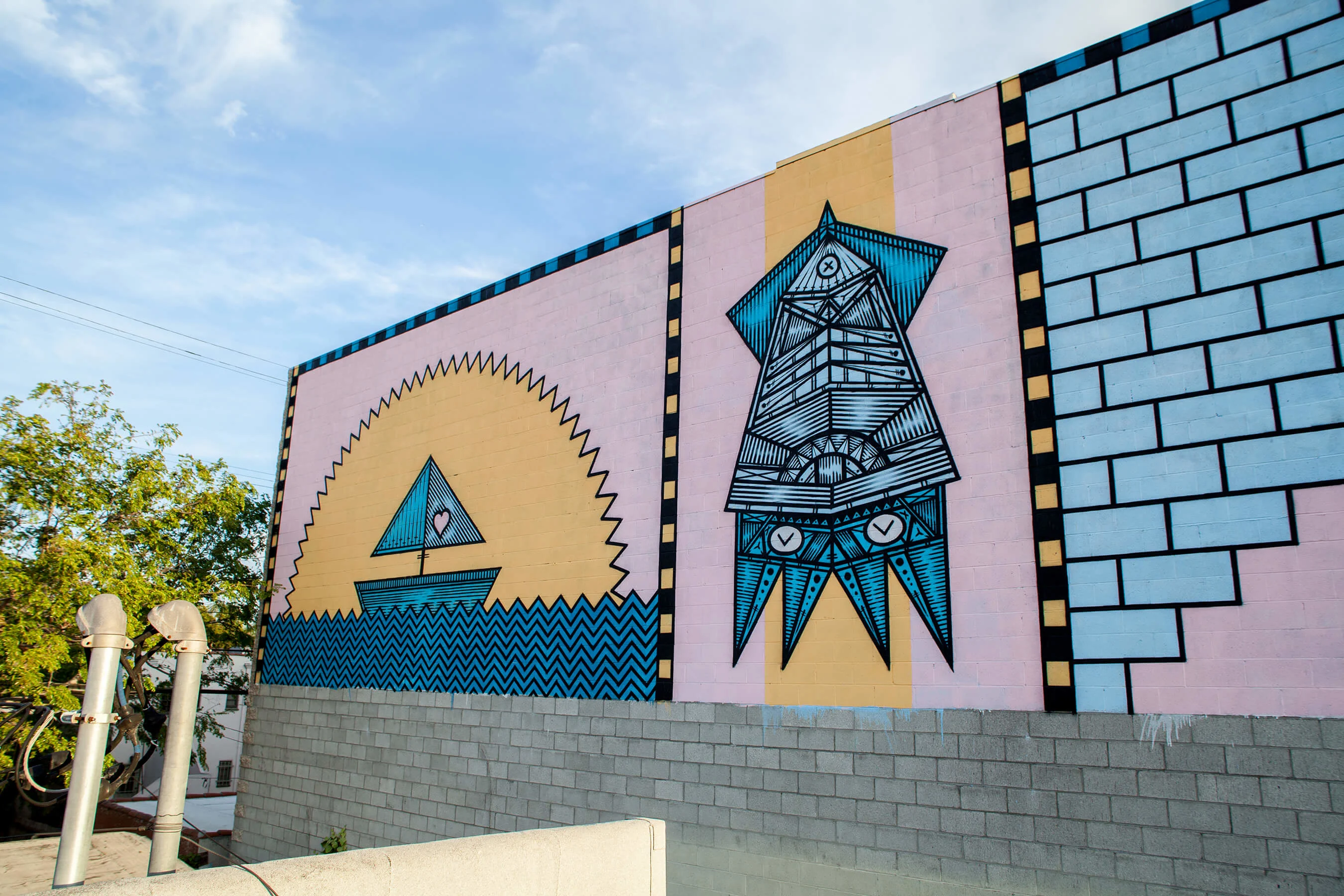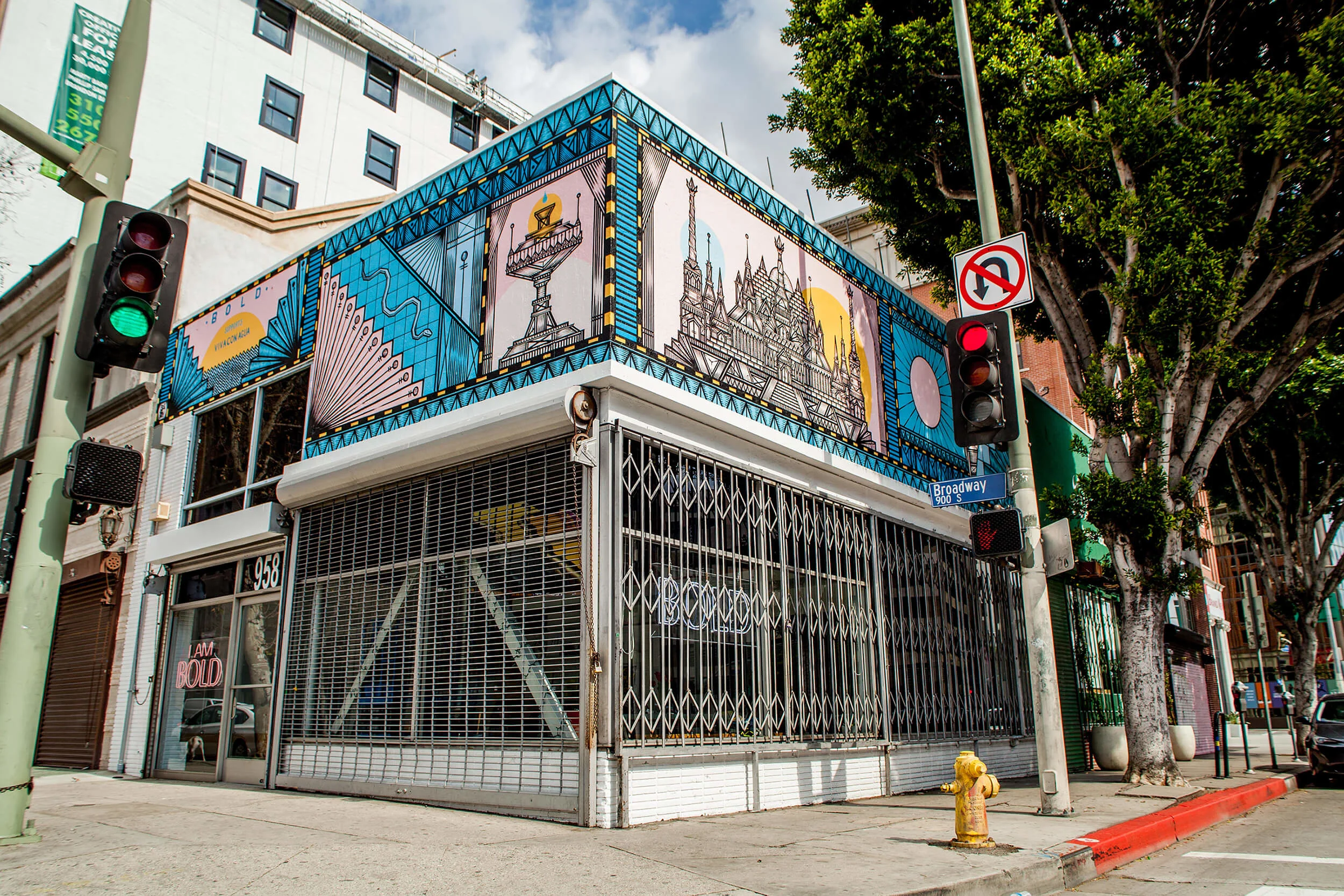

At the time of writing, Ukrainian artist Alexander Isakov is in Los Angeles to paint two huge murals. This is nothing new for Isakov; since he co-founded the street art collective GuapoSapo five years ago, his murals have taken him from Serbia and the Netherlands to Rwanda and Uganda.
At first, Alexander and the other two artists in the collective (Jumu and Krashkid) collaborated on every piece but it became more and more tricky to combine their styles. They still travel together but they paint separately and push each other to become even better. “I was small-minded before. Because of them I’ve learned to think bigger,” he says.

Alexander grew up in the German city of Hanover, and he studied lighting design with a focus on light art and installation. He never felt the need to study painting; he just began teaching himself as he went, always looking to create something new. “Maybe that’s why I have my own style – because I never had a book that told me what I need to do and how I need to move.”
Often symmetrical and always packed with detail, Isakov’s vibrant work is visible across the world and each location brings its own experience.


I’m trying to give the people something beautiful, and maybe put a smile on their face.
For example, when painting in Puebla, Mexico in 2018, he felt the pressure of the country’s rich mural history, which goes back many decades. “Diego Rivera is maybe the most commonly known, but not the only great muralist that marked the strong history of wall-paintings in Mexico,” he says.
But the reception to his work in Mexico was terrific. Local people, thrilled that he was adding more color to their neighborhoods regularly invited him into their homes for meals. This interaction with the local community is a part of Isakov’s process, as he likes to build a relationship not only with the wall he’s painting, but with the people who pass by. “In the end they are the ones who will see it every day,” he says. “I’m trying to give the people something beautiful, and maybe put a smile on their face, even just for a couple of seconds.”
His current project in LA was instigated by Viva con Agua, an NGO focused on providing access to clean water around the world. “They’re using art, music and sports in a really smart way to create awareness and a positive vibe, while still speaking out about the lack of drinkable water in the world,” Alexander says. He was given two locations by the organization and was told he could paint whatever he wanted — as long as it was water-related.
He decided to paint an octopus, a fish, a boat with a heart on it and a sunset. These bright playful subjects are representative of Alexander’s usual style. He considered trying something more aggressive to underline the lack of action being taken on water issues, but in the end he chose to present hope and happiness instead. “I’m not a political artist to be honest,” he says. “Because there’s a lot of people who can do it better than me.”


I get bored really fast and that’s why my art is moving fast too
His process is similar each time. He always begins with the background, and then layers his signature line-patterns on top, working like a printer from the top-left corner to the bottom-right.
He often makes digital sketches first. “I create a composition of colors, forms, ornaments and objects,” he says. But these sketches often have little bearing on the final work.
It’s difficult to truly prepare, because whatever he does on paper won’t translate easily to the wall itself. “I like to just stare at the surface when I arrive and see what ideas come to mind,” he says. “Let the ideas come as I go.” Each piece then develops as he works, with elements fitting together as he moves through the piece.

Alexander is well aware of how his style has evolved and changed since his first mural. “I get bored really fast and that’s why my art is moving fast too,” he says. “I’m trying to get out of my comfort zone as much as I can, because I know things only move forward when you’re not afraid of change.
“I don’t know how my murals will look next year. I’m thinking about the here and now, and the future will construct itself.”
Words by Alex Kahl.

